Rare D-Day LOT - WWII ENGLAND Discovered U.S. Ensign No. 11 48 Star Theater Flown Naval Amphibious Landing Craft Flag *








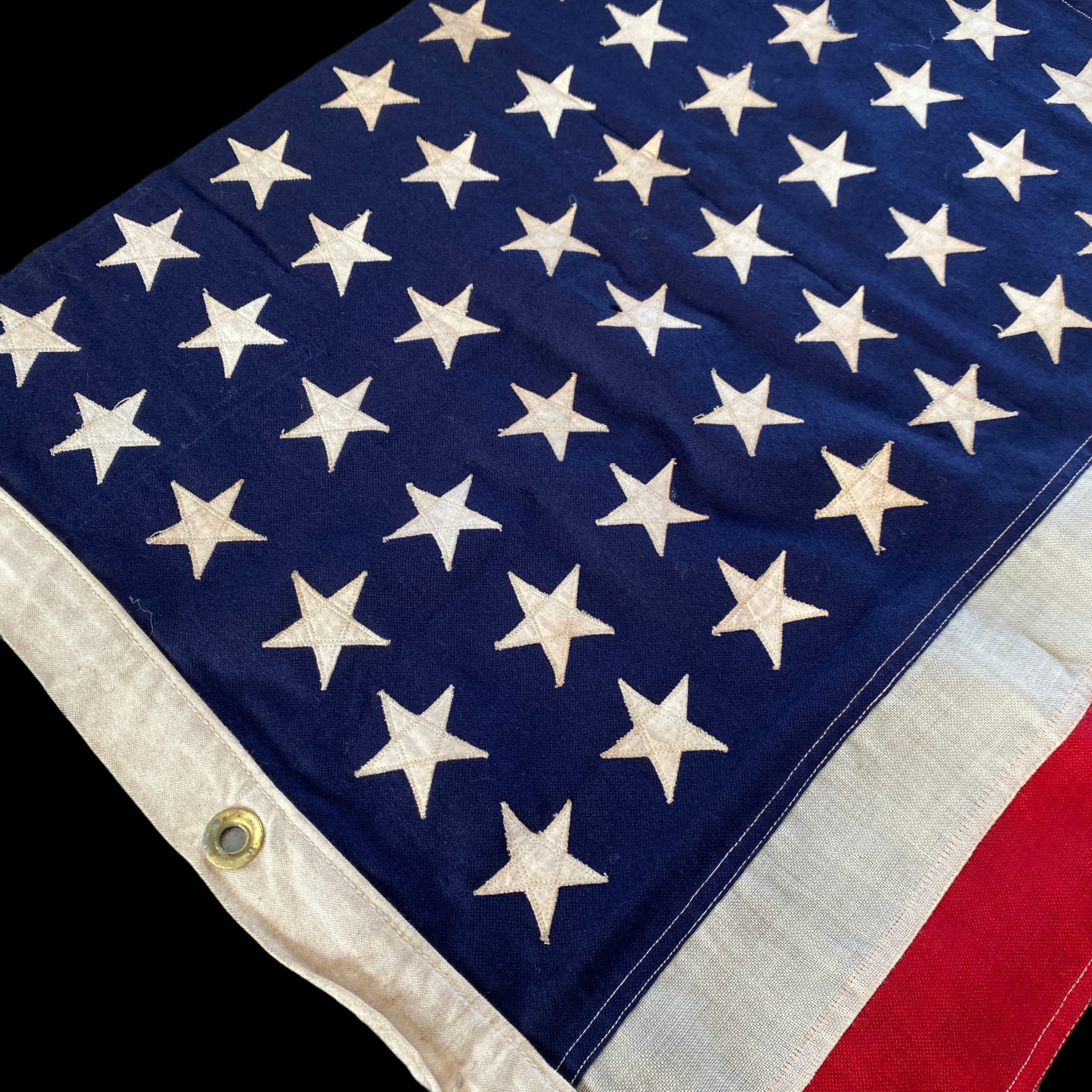




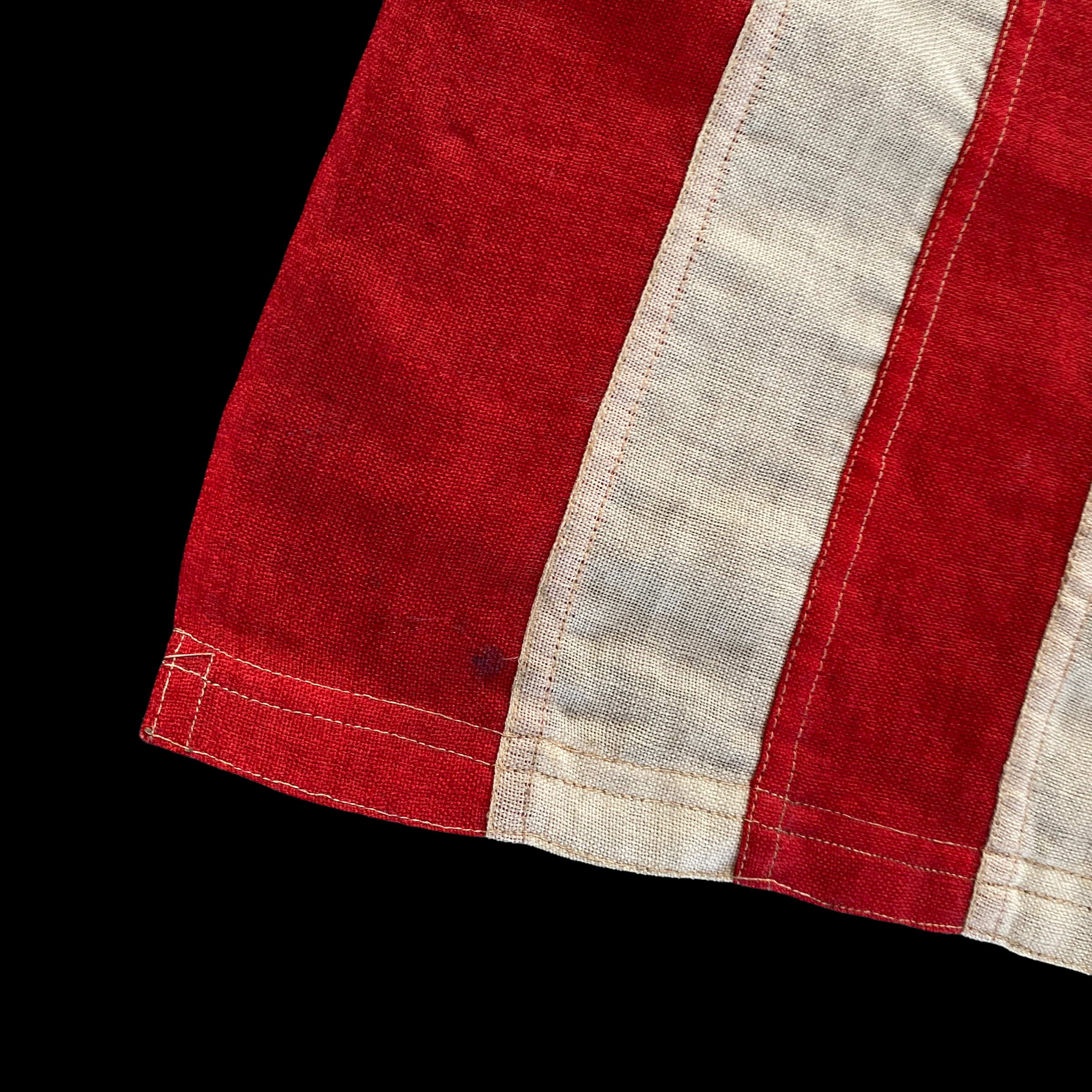
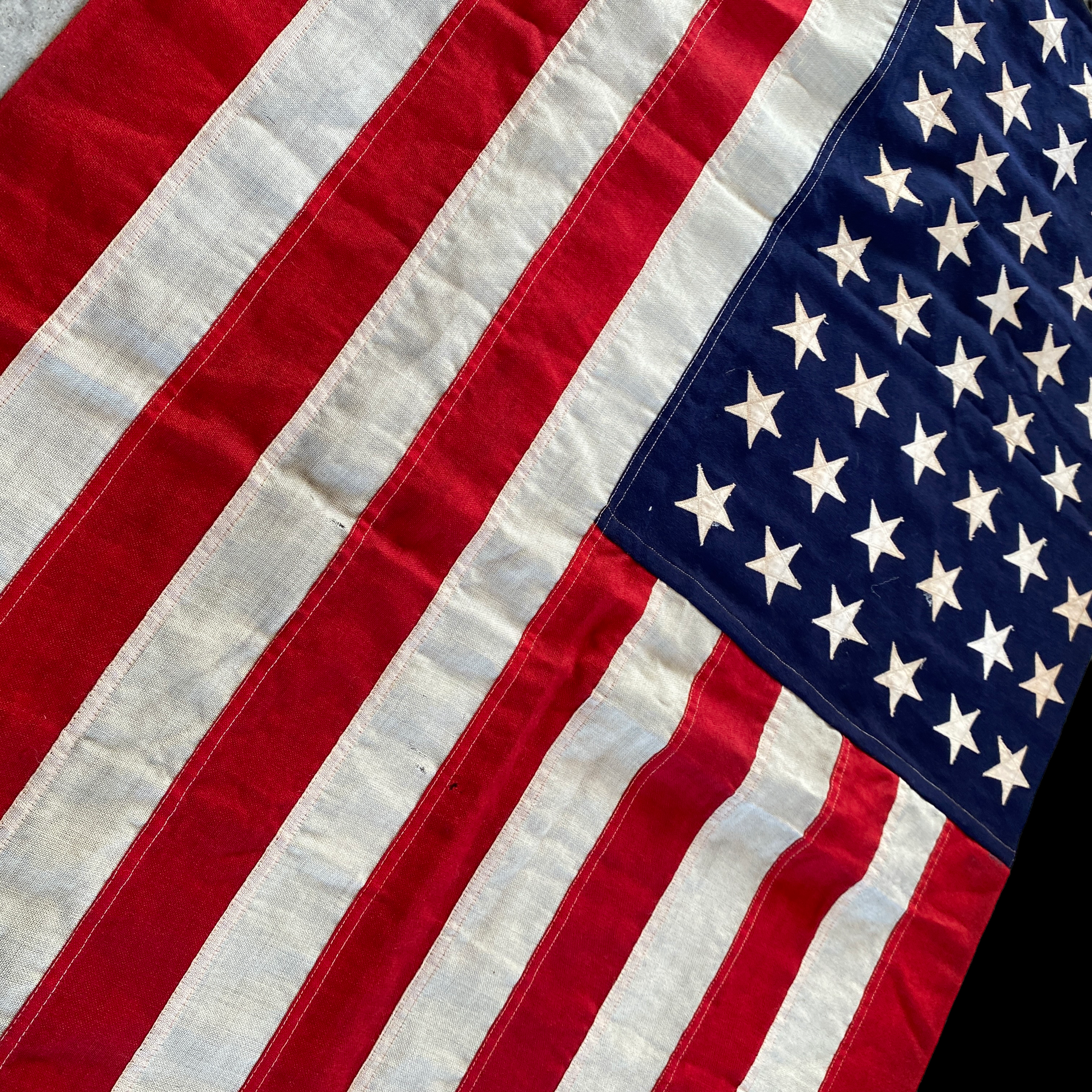


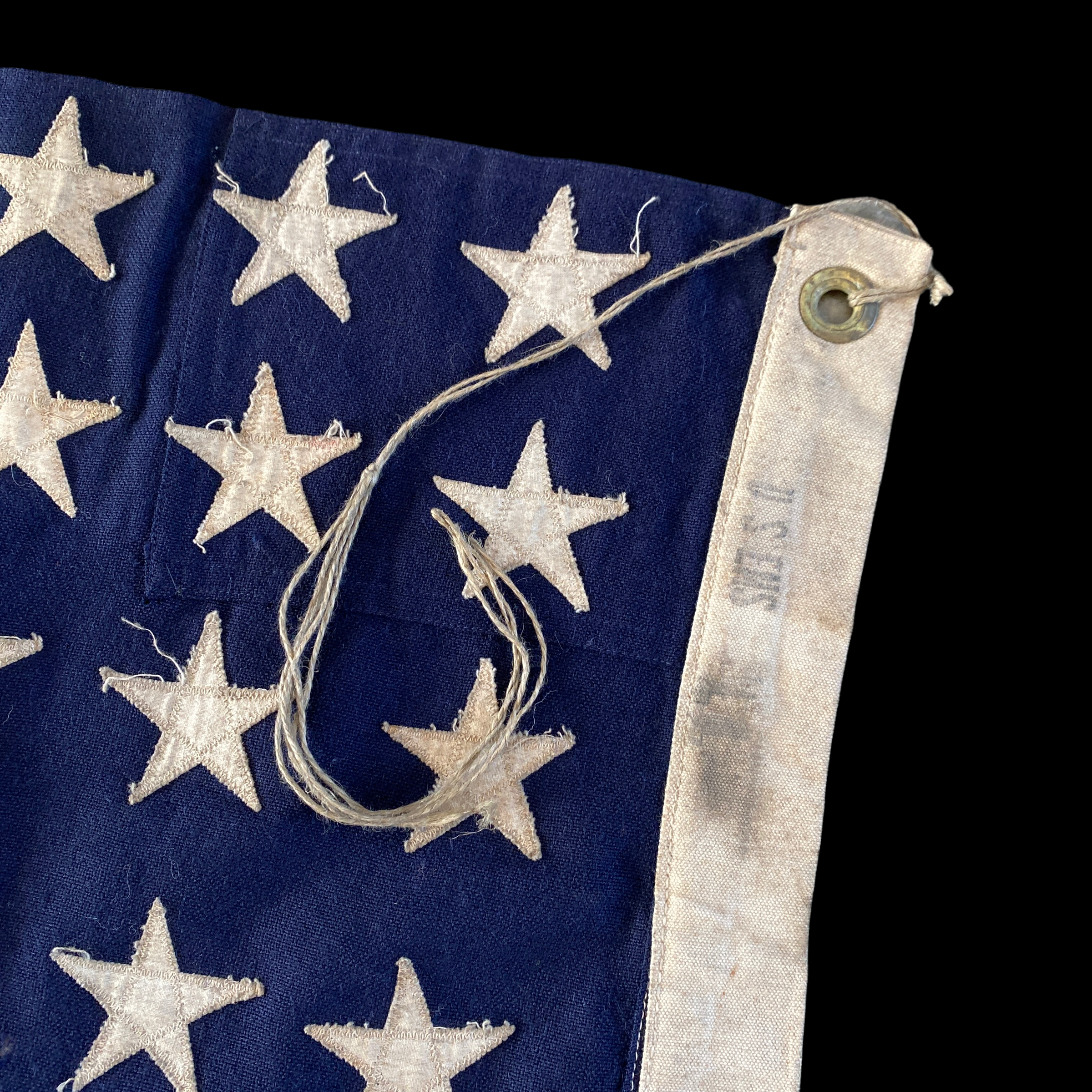
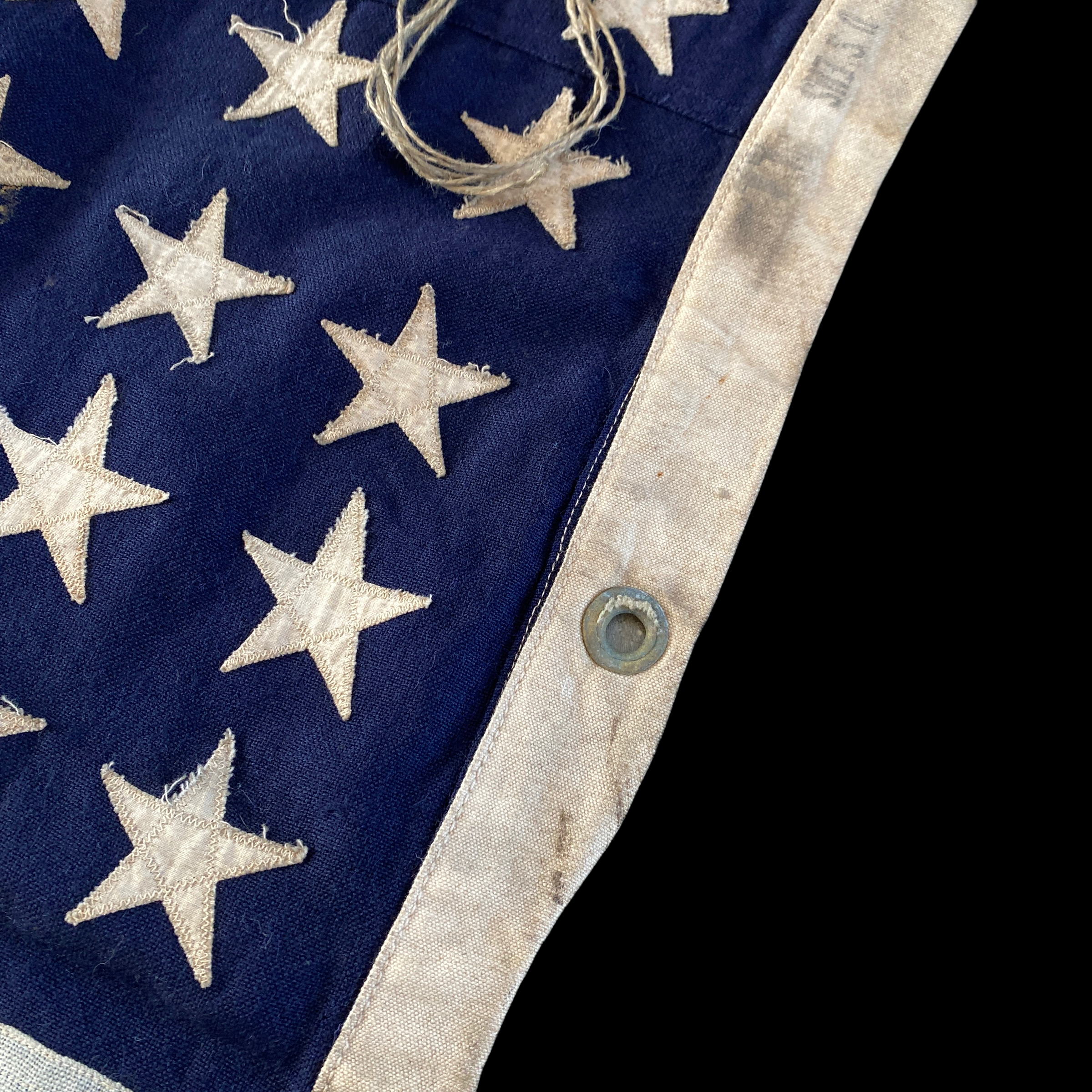
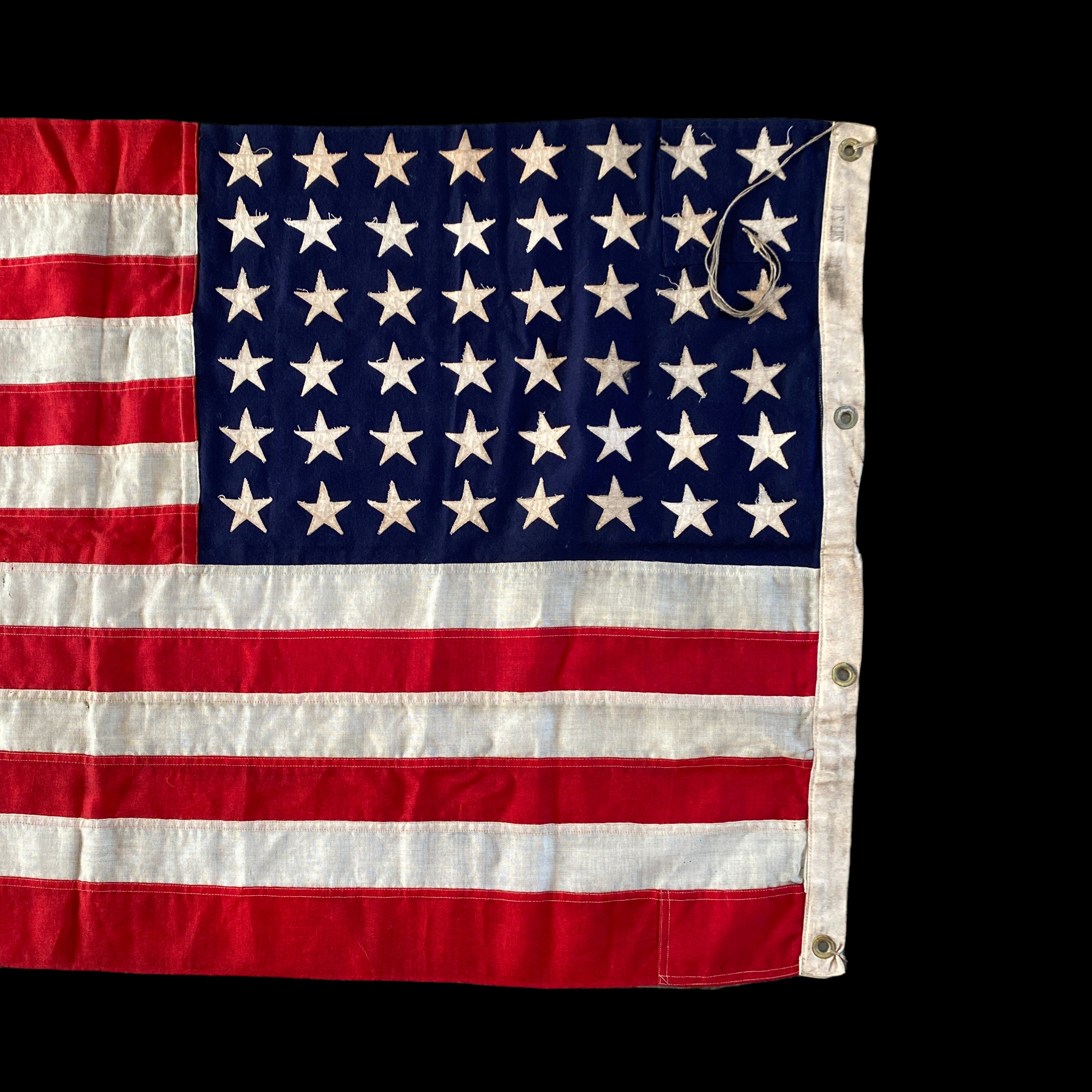

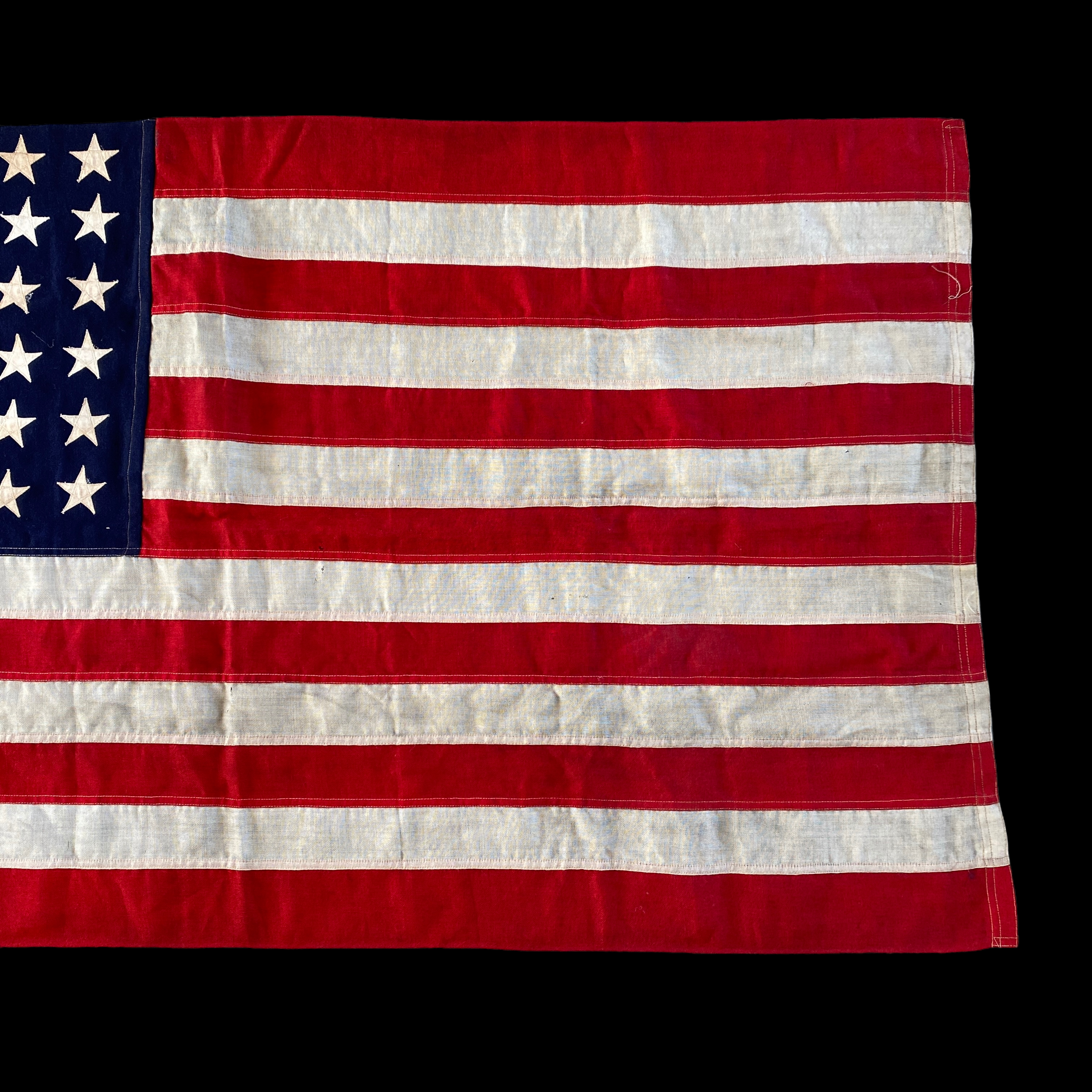
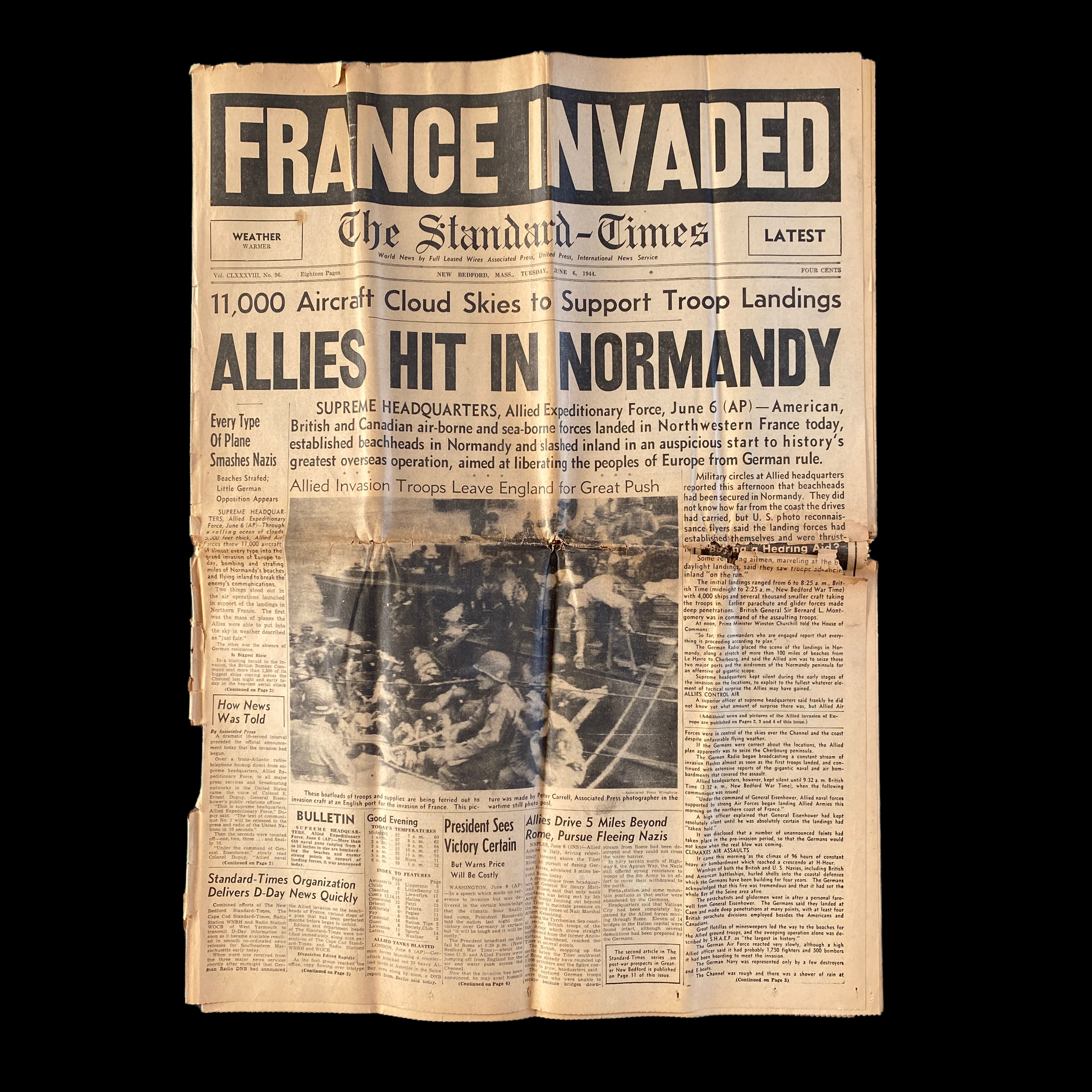

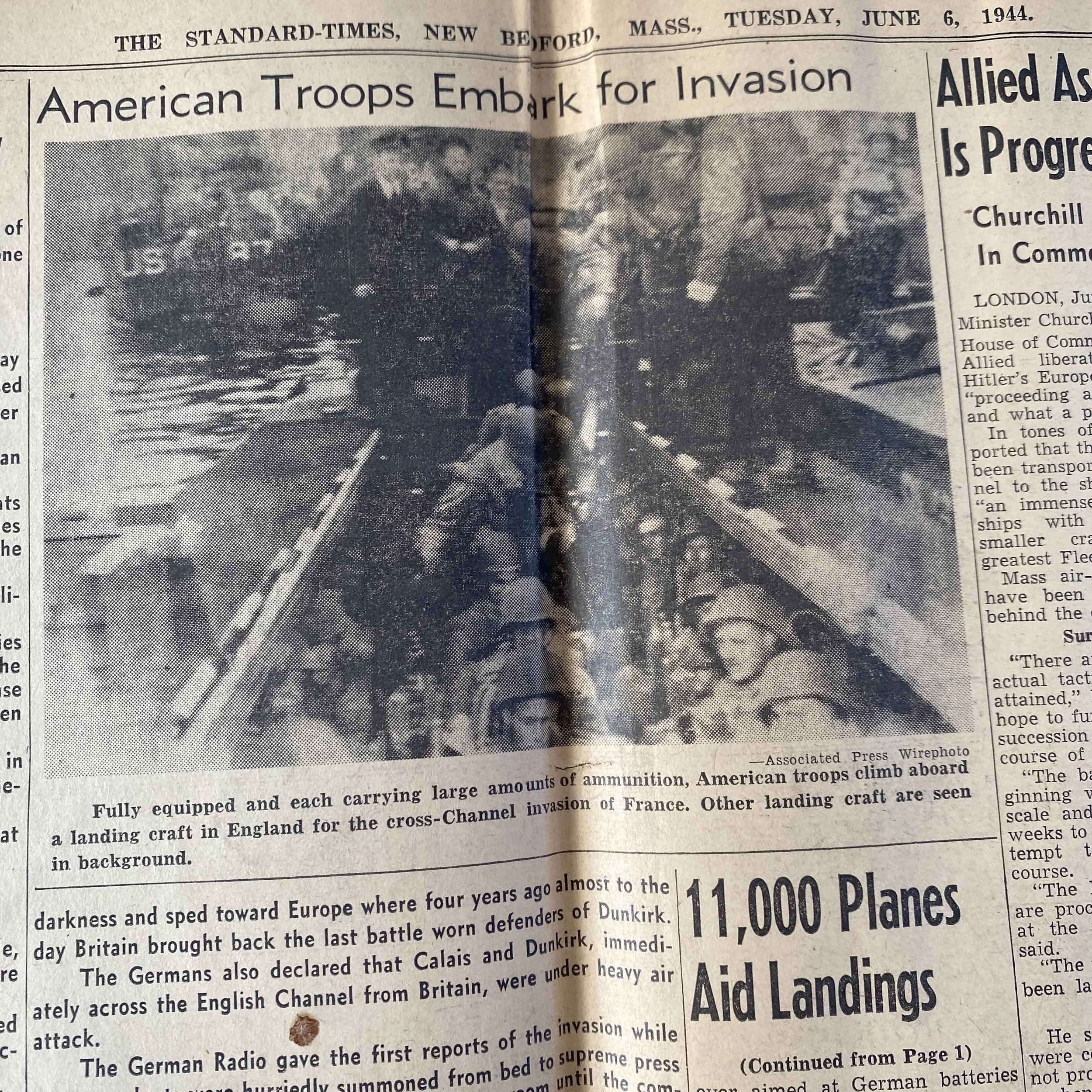

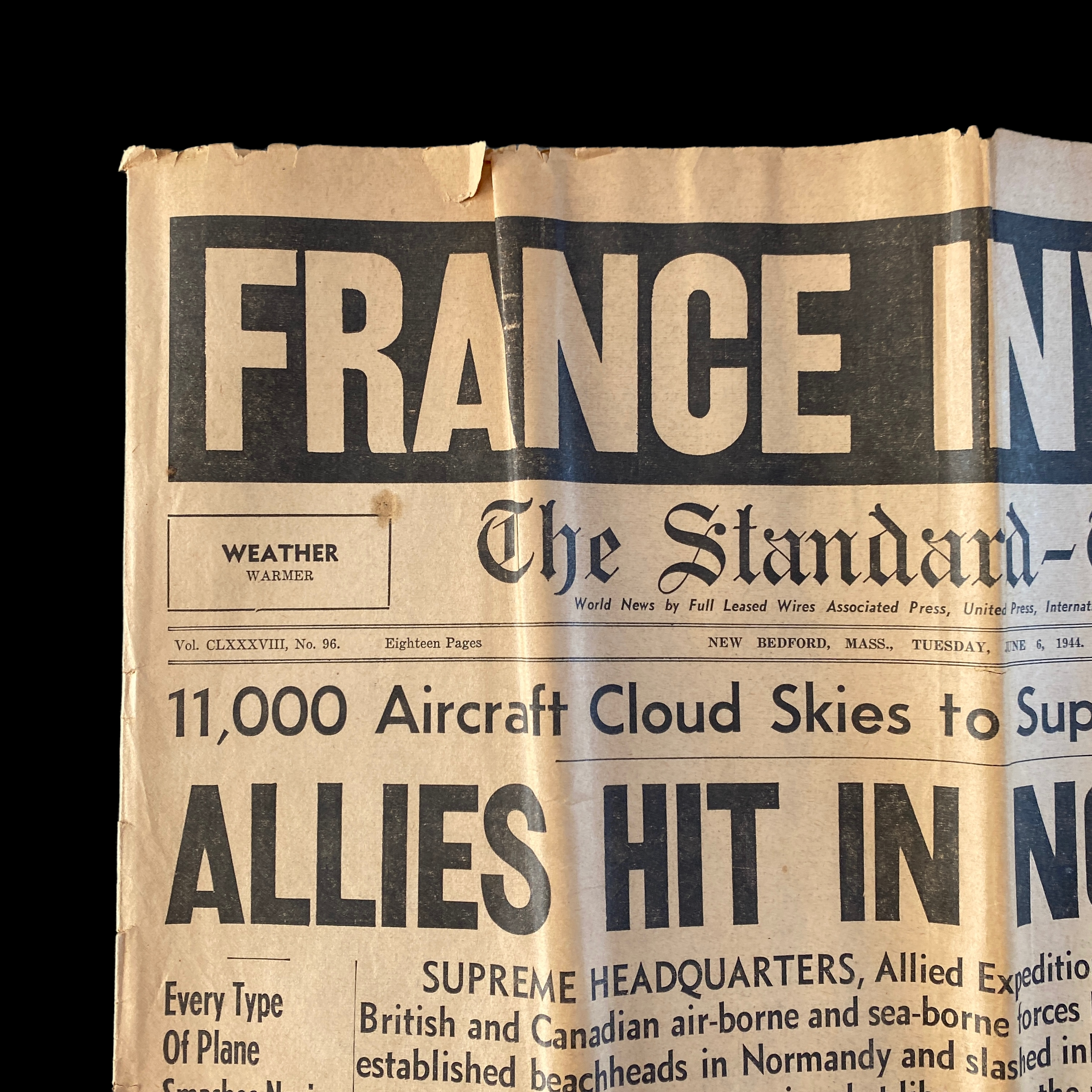
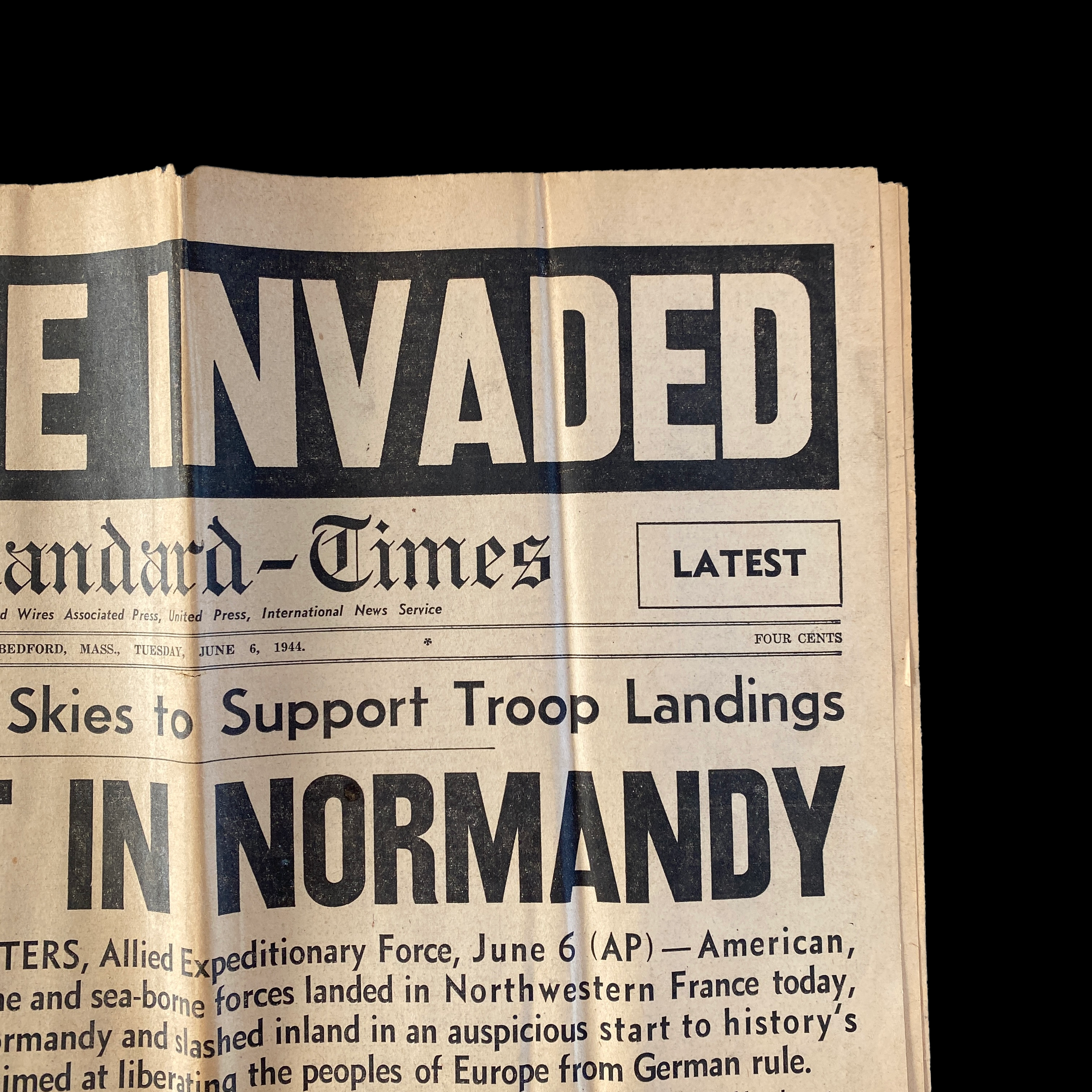
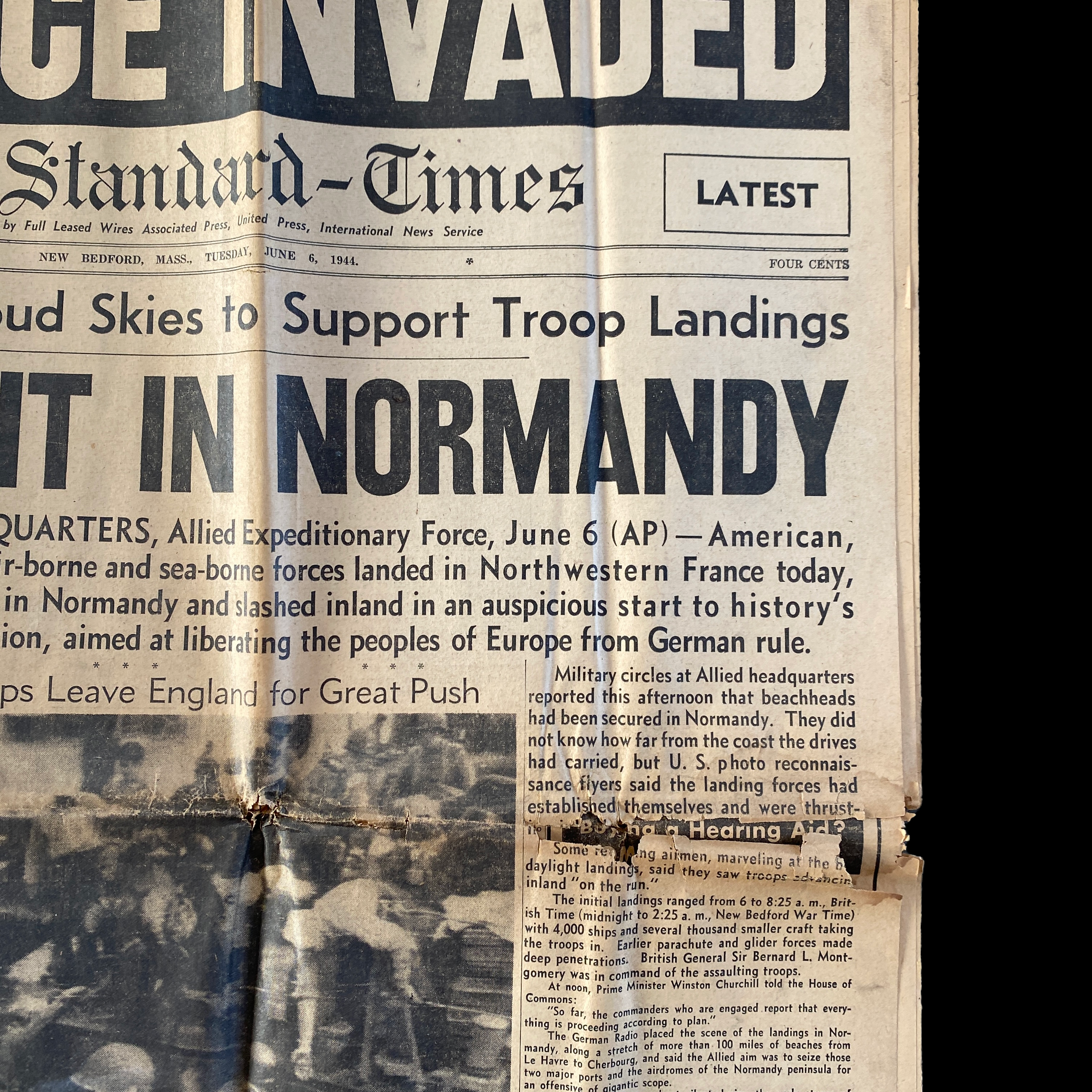
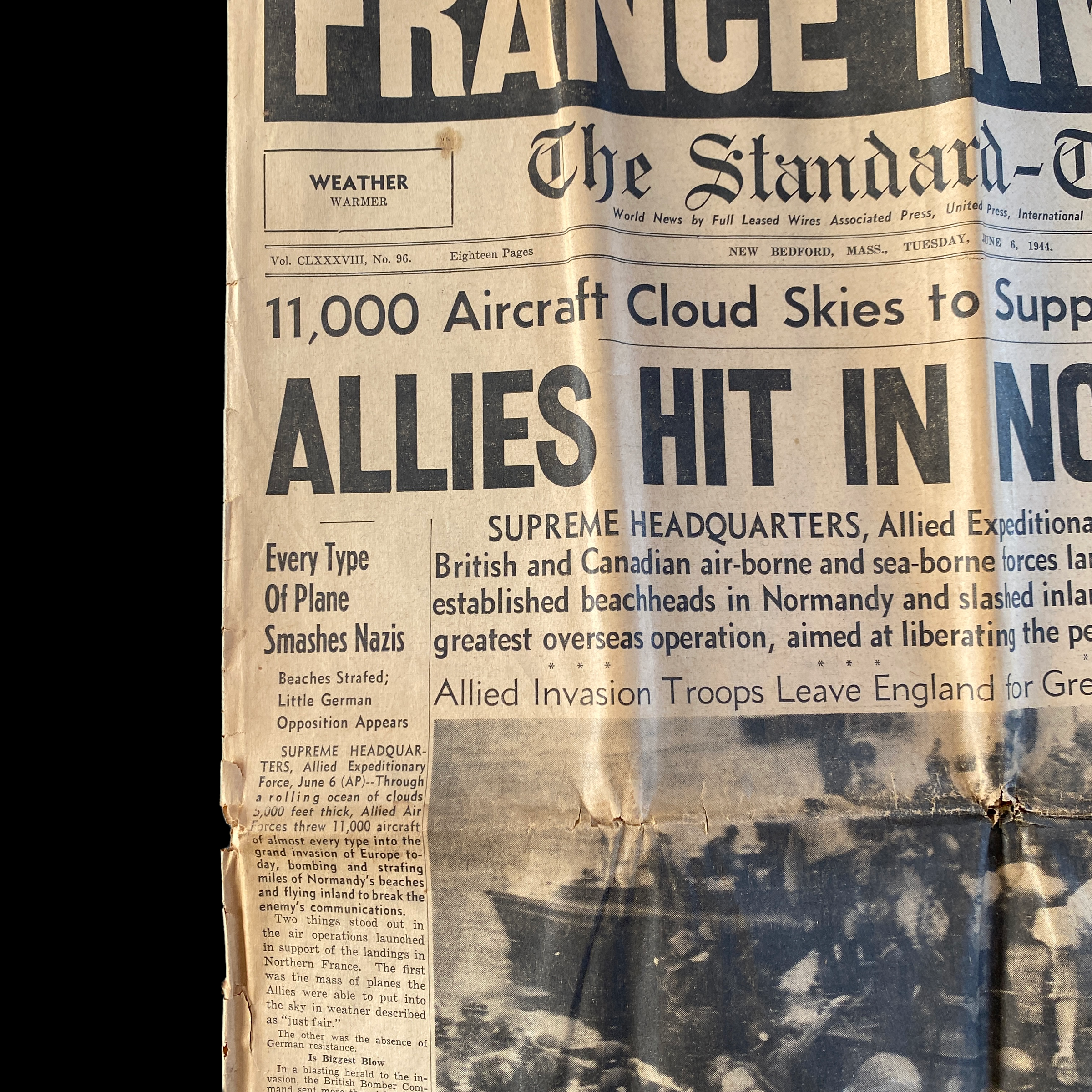
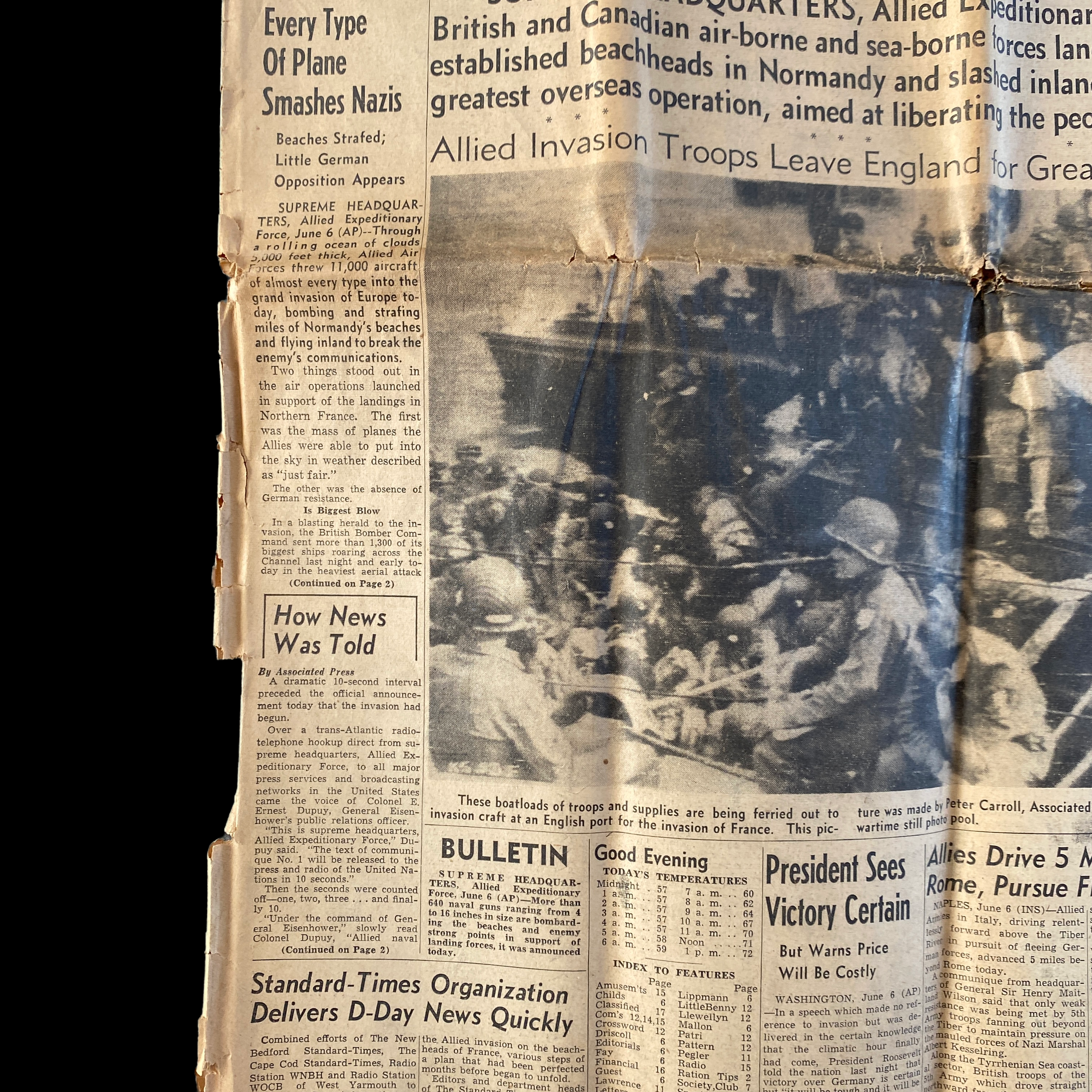
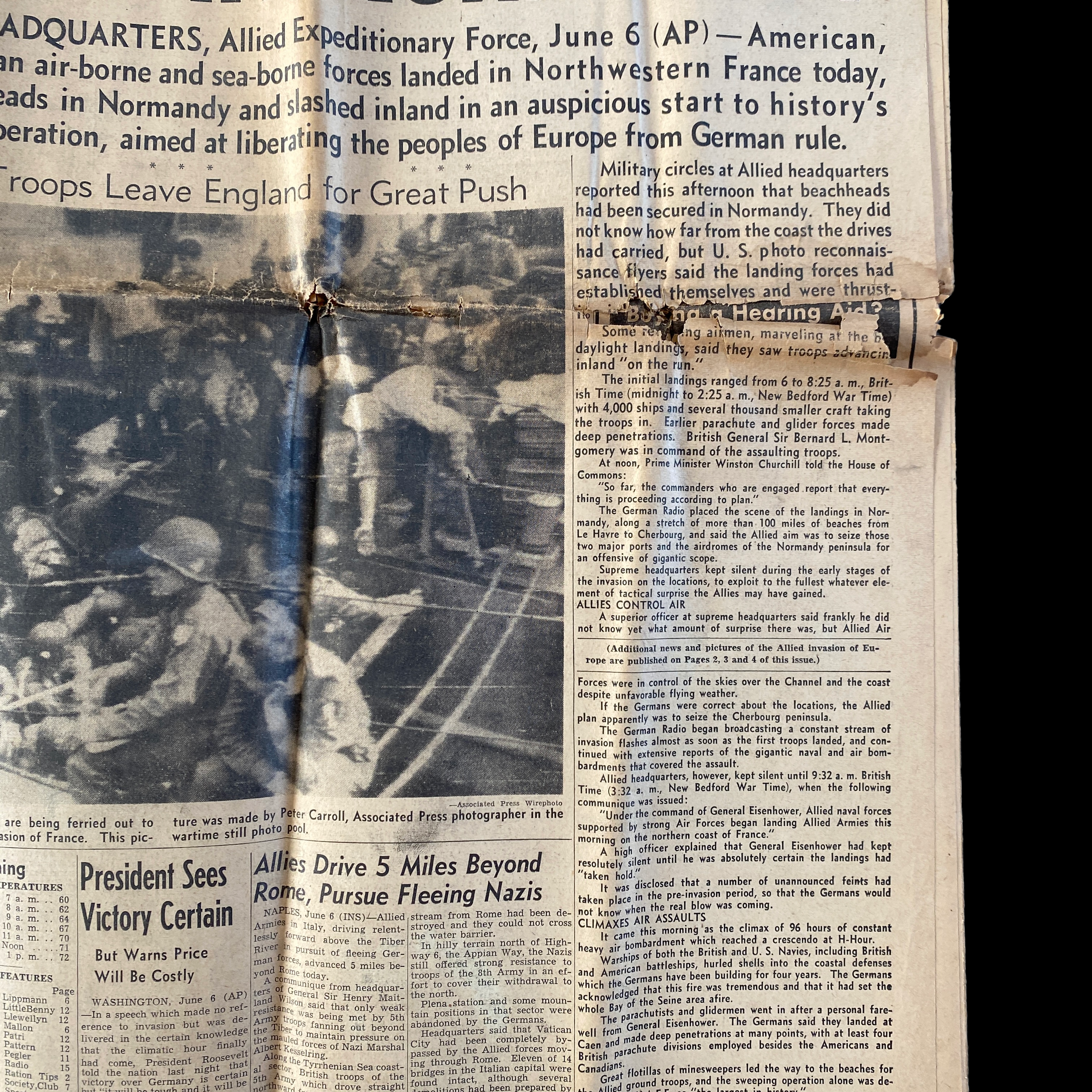
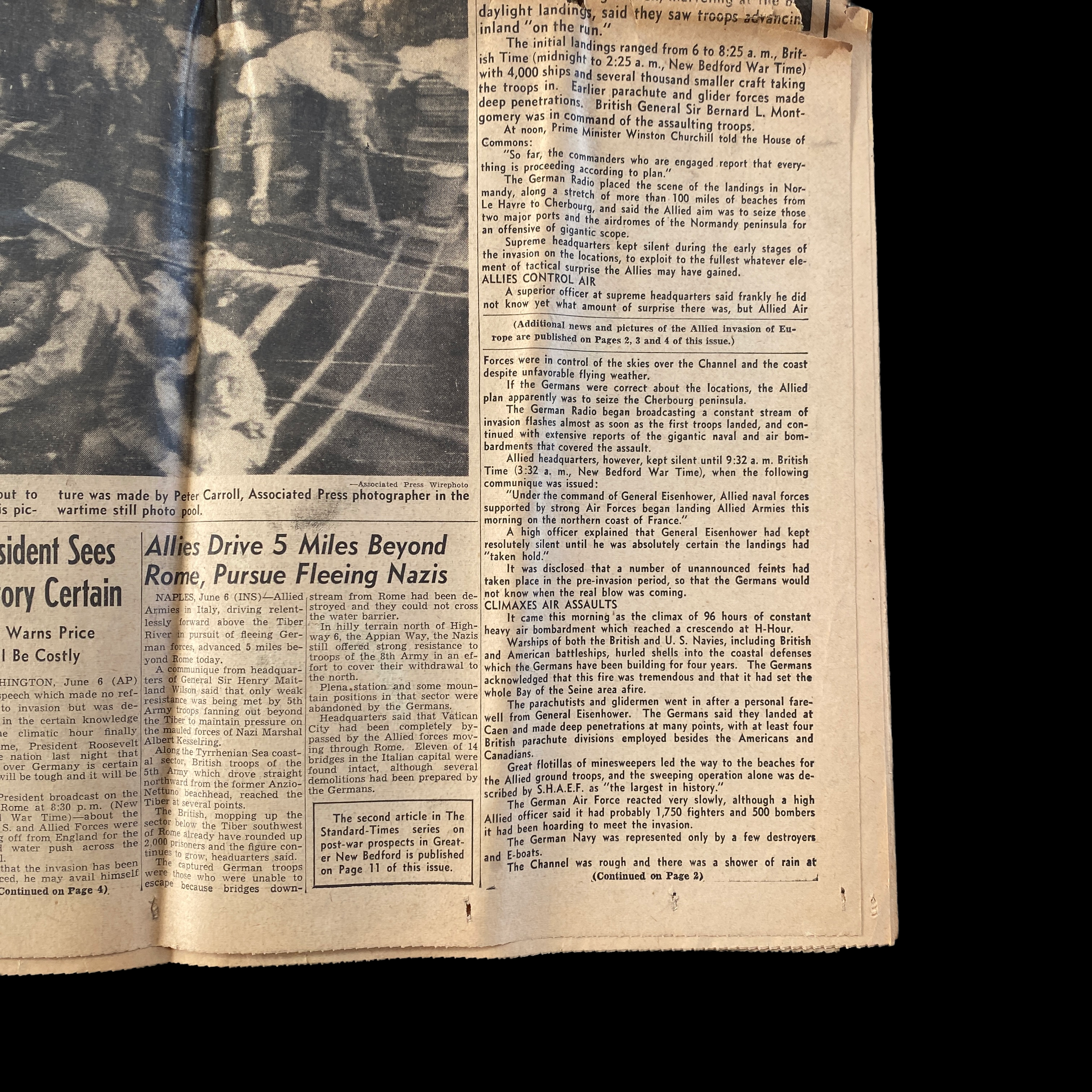
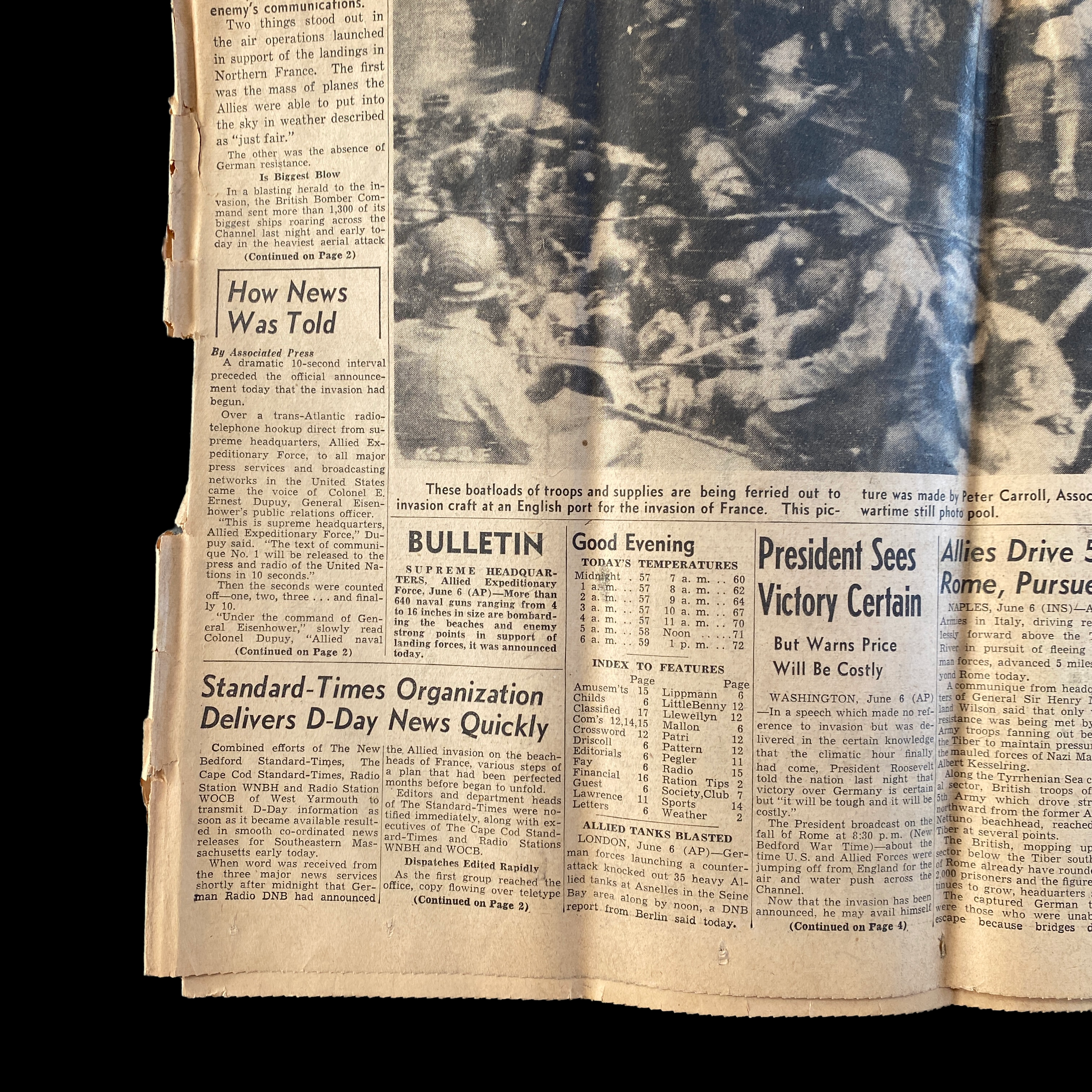
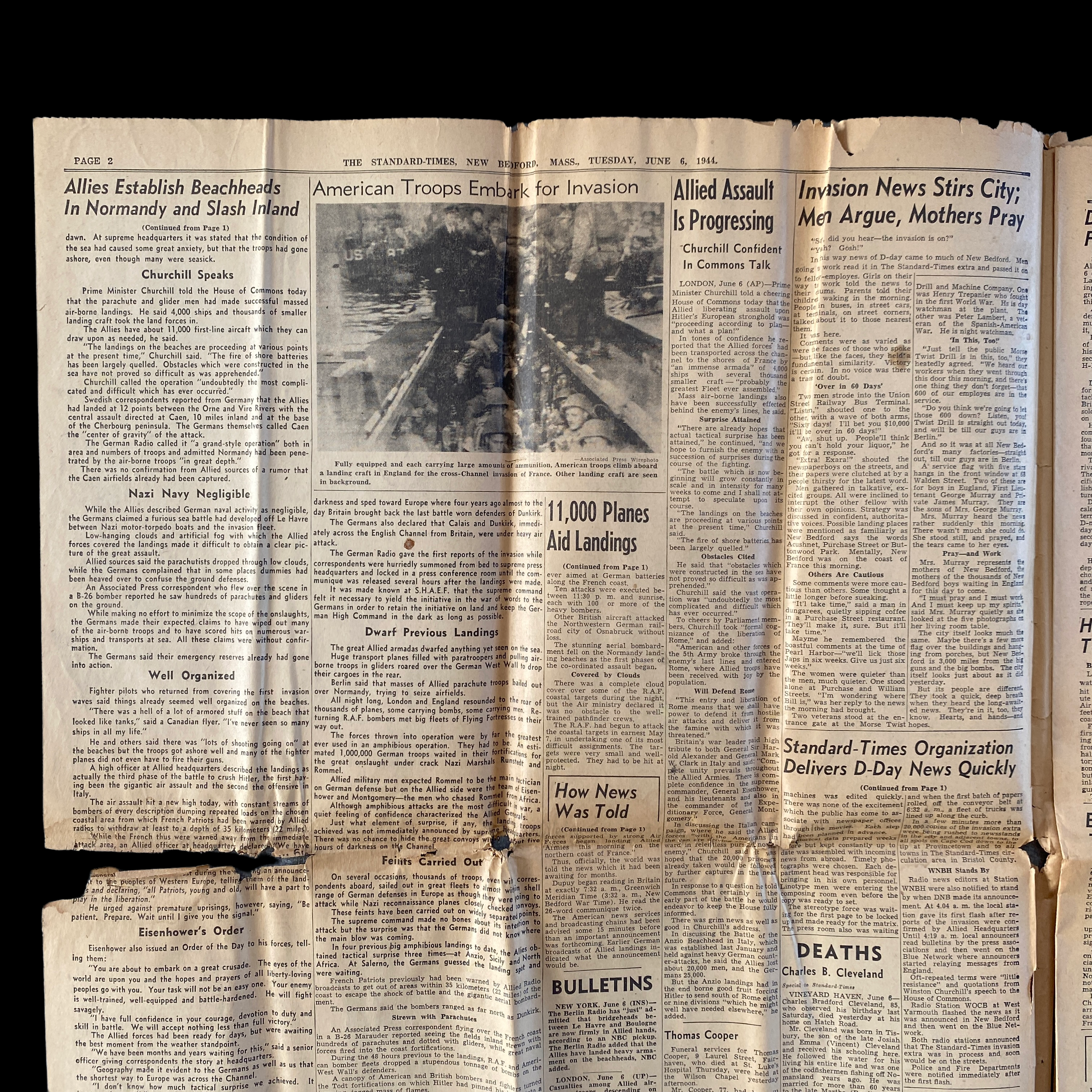
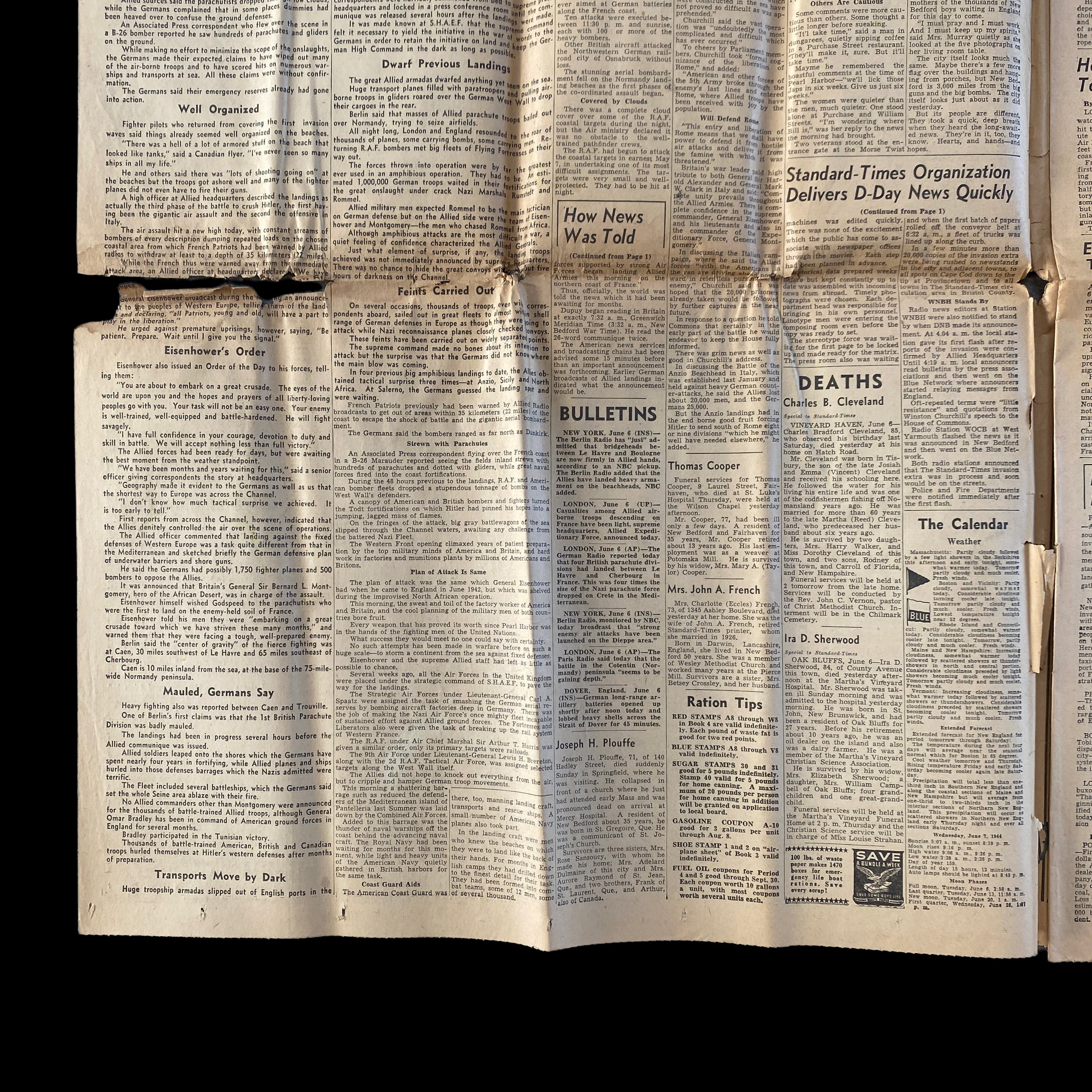

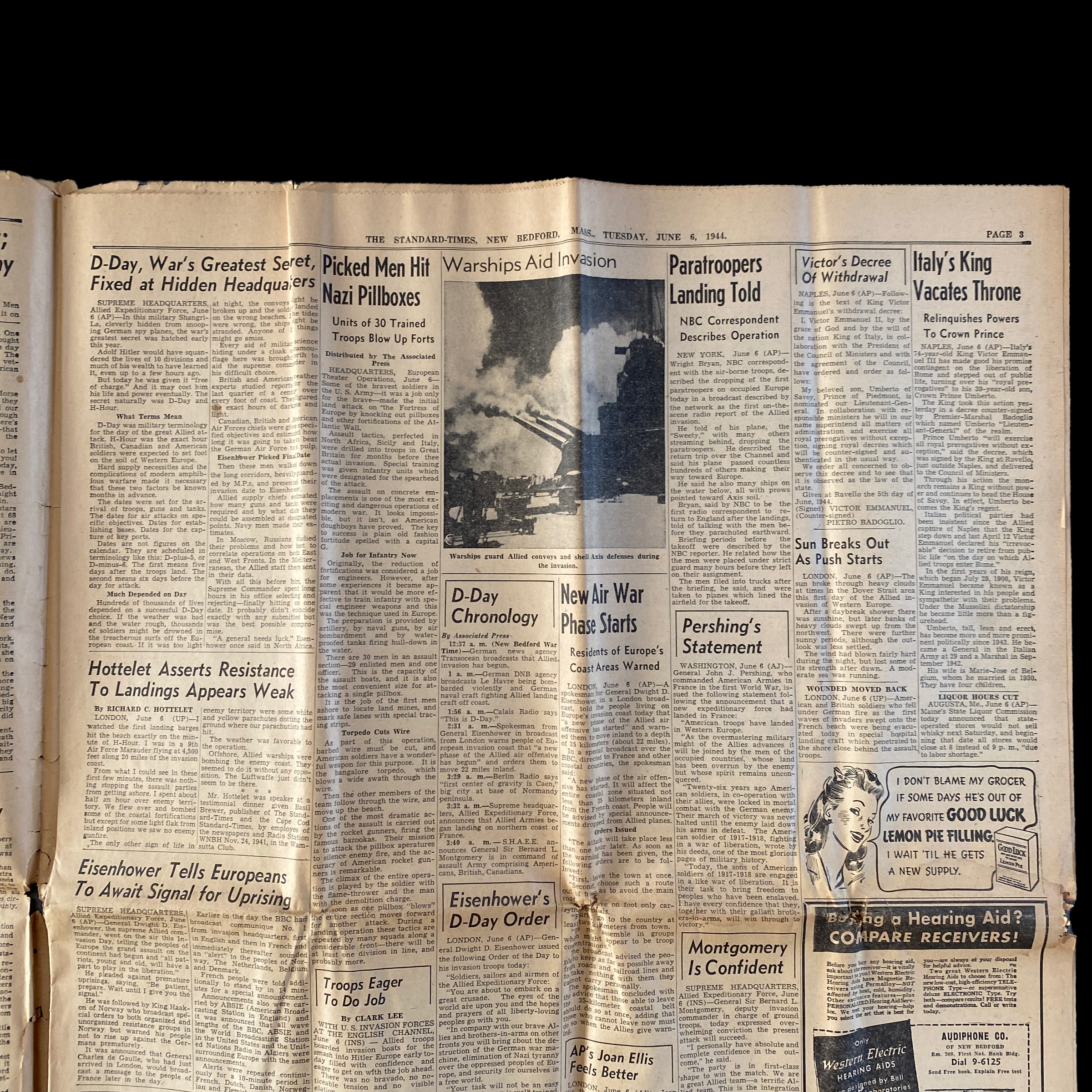
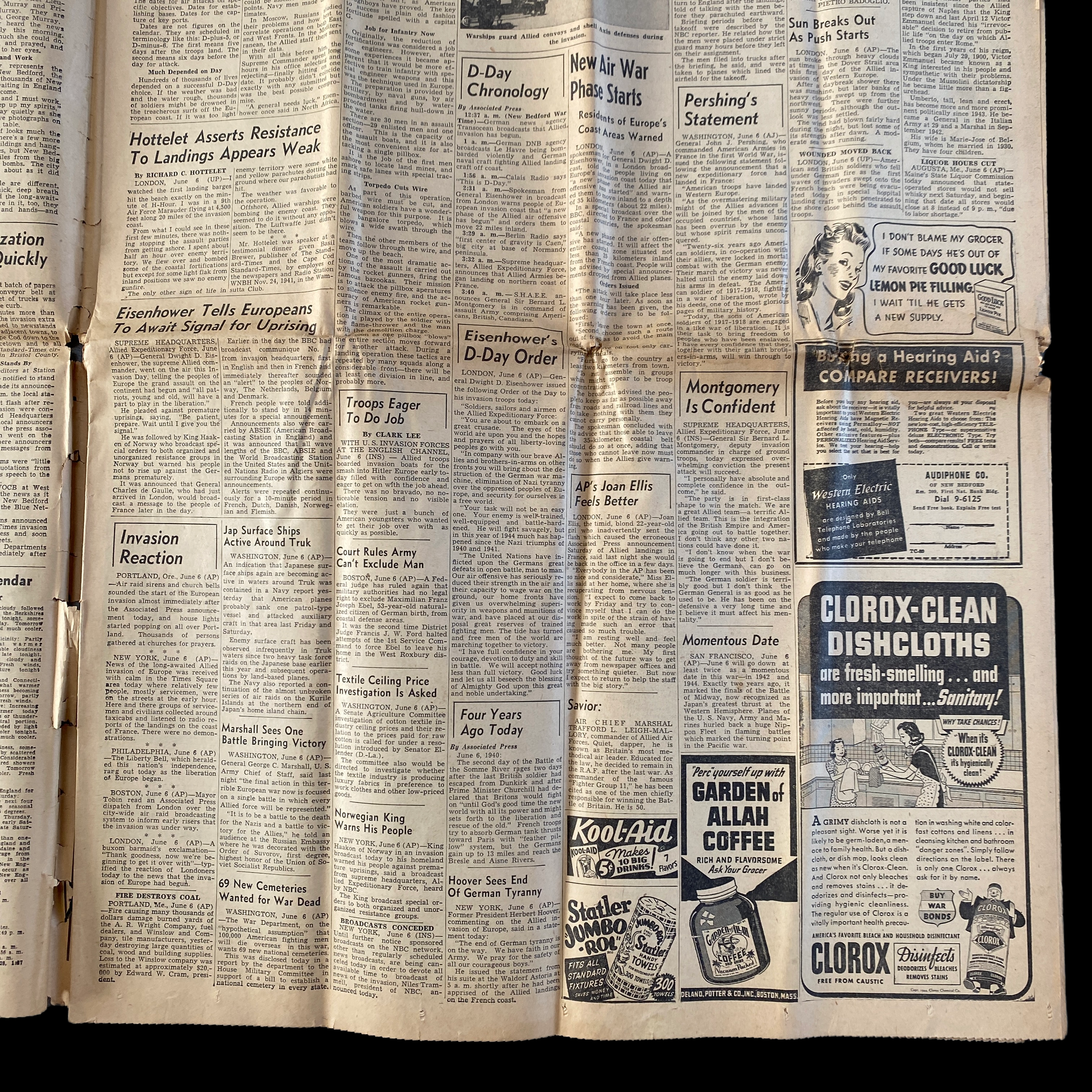
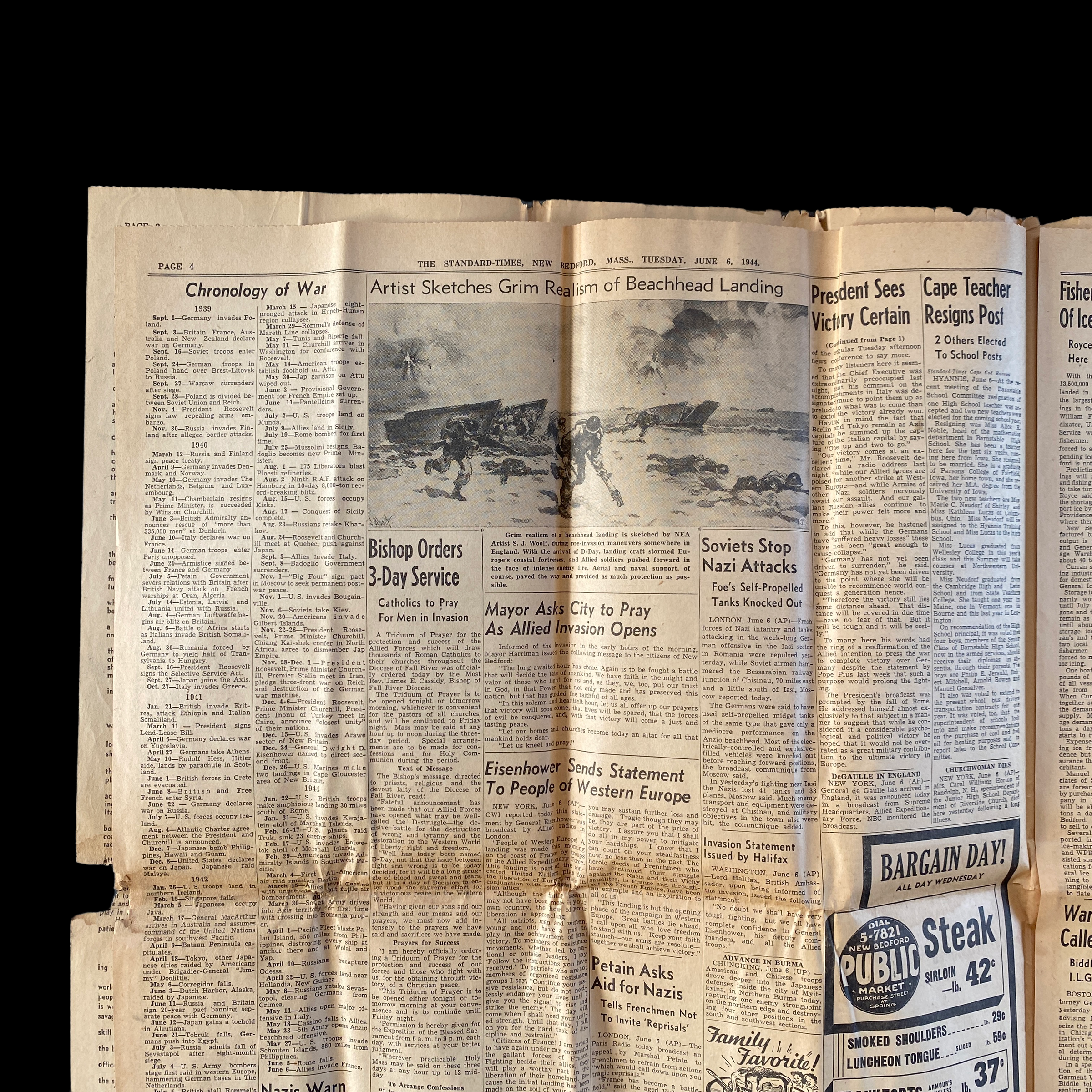
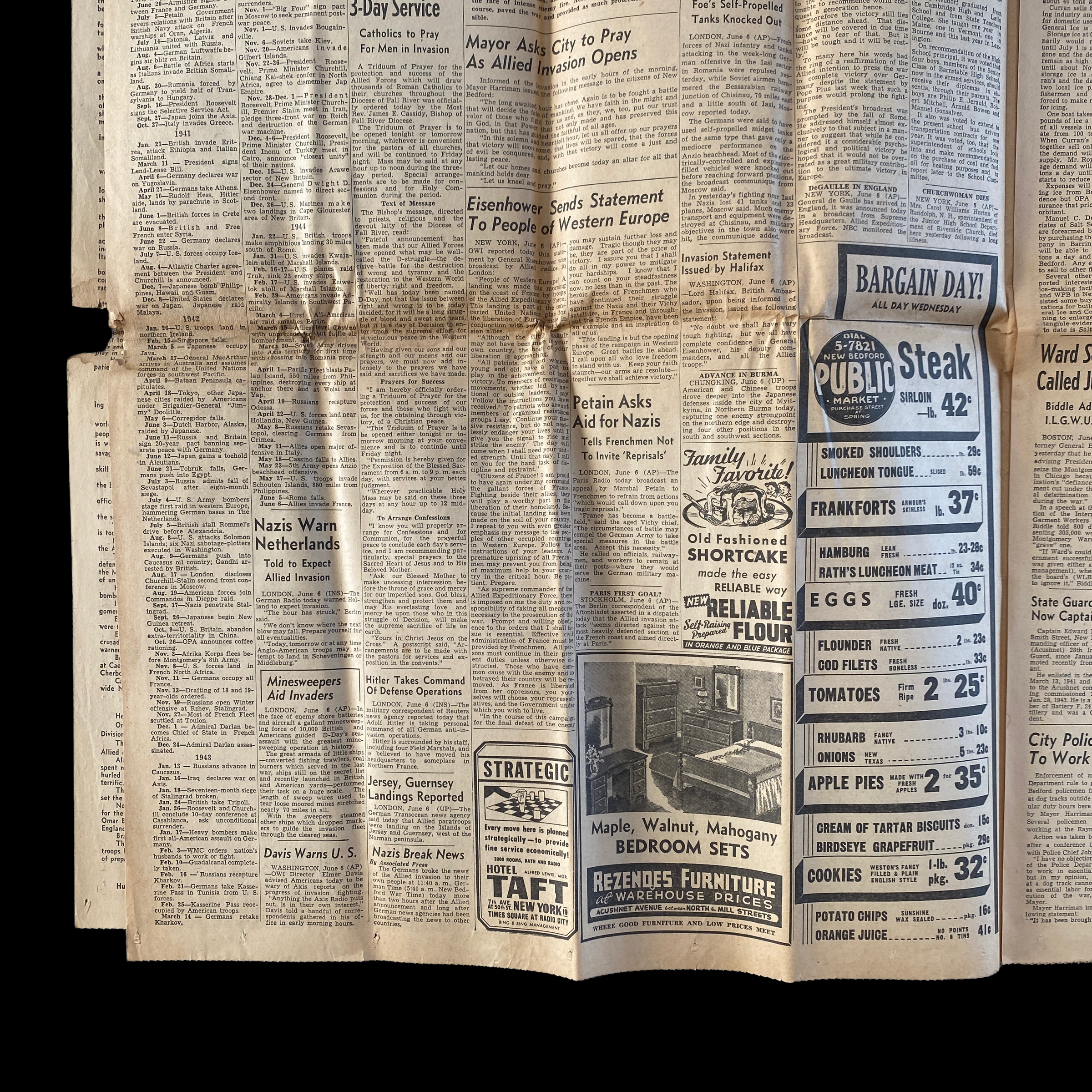

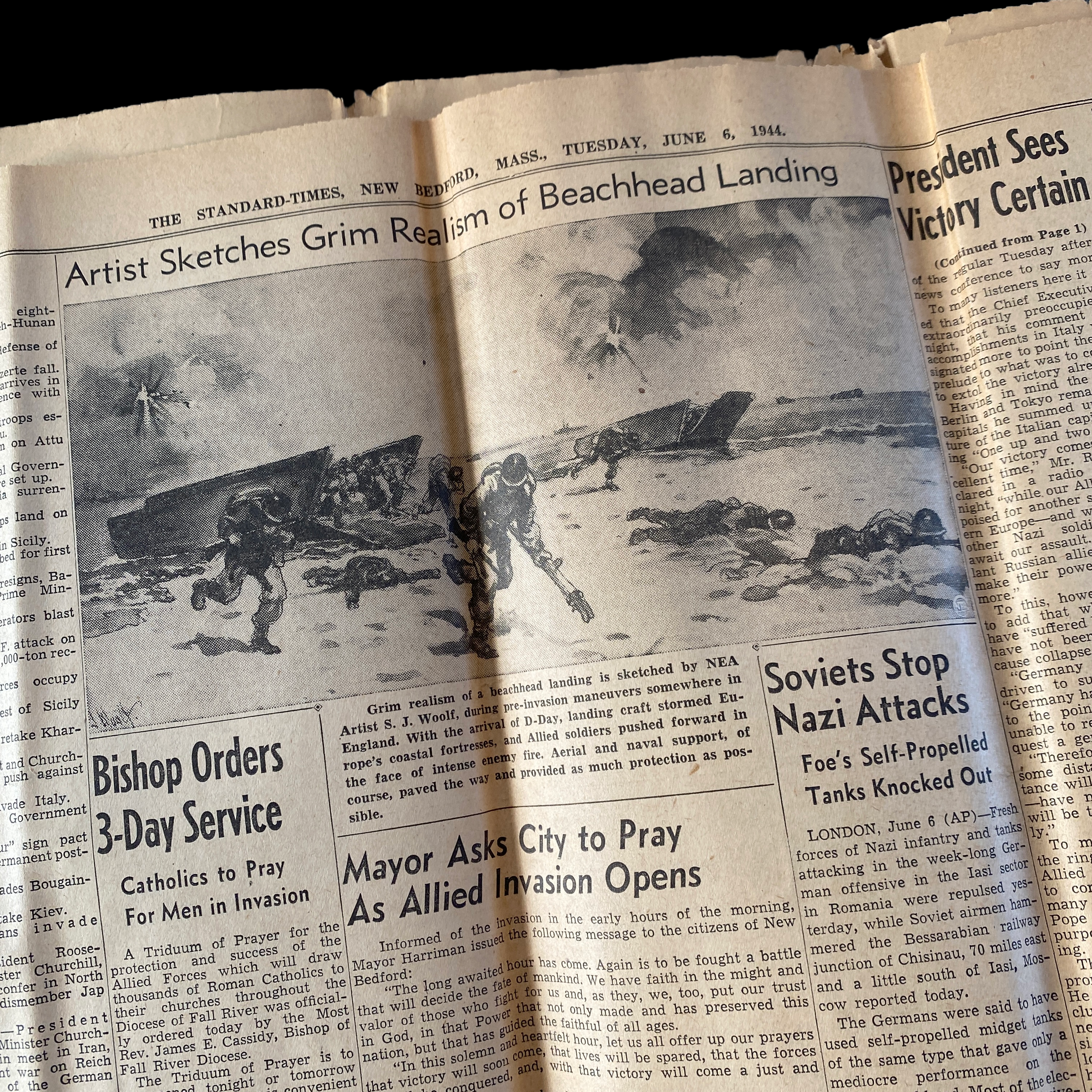







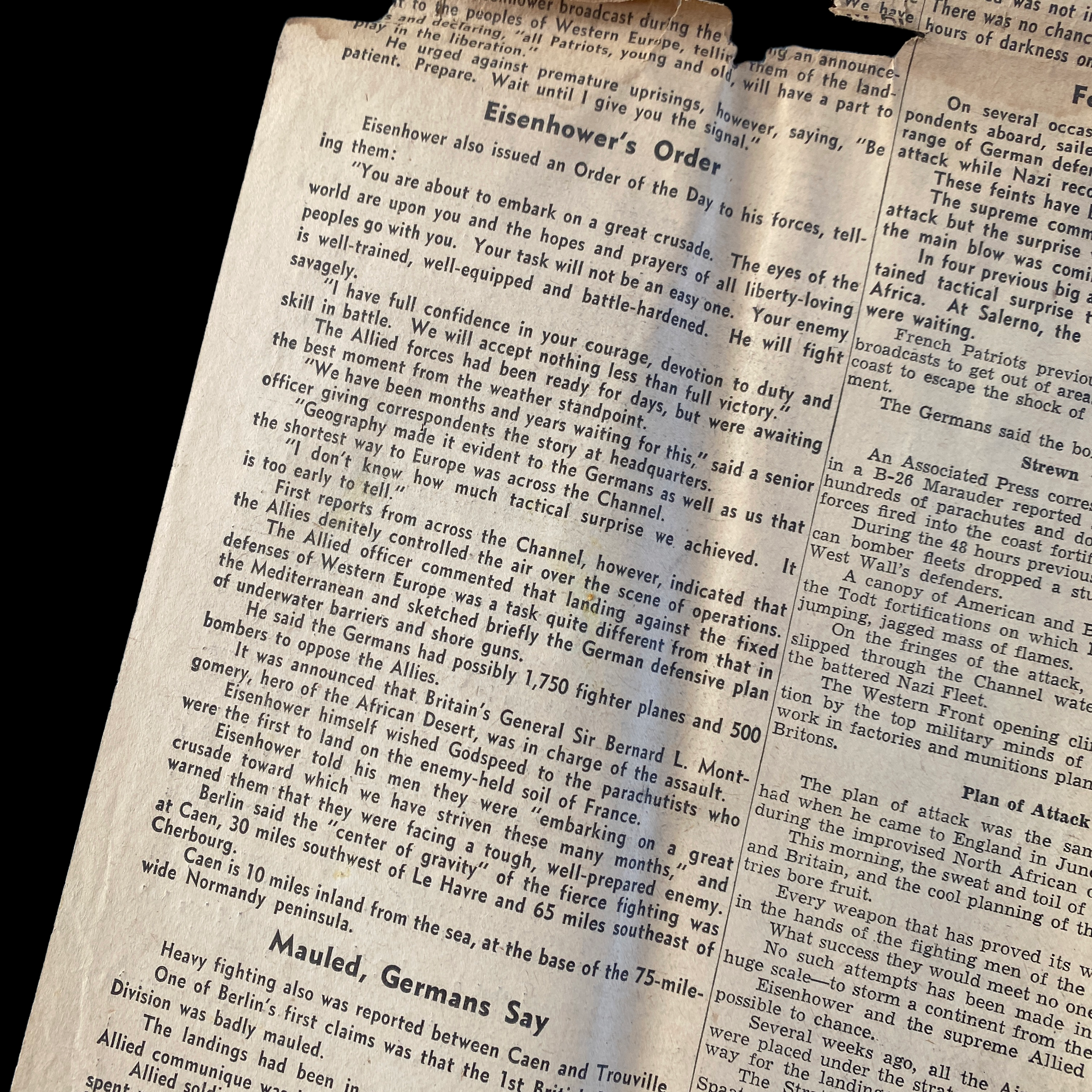









Rare D-Day LOT - WWII ENGLAND Discovered U.S. Ensign No. 11 48 Star Theater Flown Naval Amphibious Landing Craft Flag *
Comes with hand-signed C.O.A.
This incredible World War II ‘salty’ four grommet theater flown U.S. Navy flag shows good theater use and wear. What makes this flag so interesting is that this U.S. Ensign No. 11 marked flag (small type) was discovered an old WWII era home in England. These No. 11 ensign flags were there the exact flags flown on the Allied landing craft on D-Day as they crossed the English Channel bound for the Normandy coast. The No. 11 flag type is also historically documented as being flown on other smaller to medium sized Naval ships including USN hospital ships, supply ships, LCT’s, etc. While the exact ship this flag was flown on during World War II will remain lost to history… its ‘salty’ grommets and theater wear are clear signs that it was heavily flown in the English Channel. Given that this flag was left in England it very well could have participated in the D-Day landings or further supply missions from England to France supplying Allied war efforts. If this flag could talk!
Accompanying the flag is an original June 6th, 1944 dated ‘FRANCE INVADED - ALLIED HIT IN NORMANDY’ newspaper of the D-Day landings. This LATEST marked bulletin shows some of the first ever invasion photographs and first hand stories coming out of Normandy and reported backto the public about the Allied D-Day landings aginst Germany! This newspaper is multiple pages or front and back stories with lots of history.
This incredible World War II theater-flown small landing craft (LCI) U.S. Navy flag shows good theater use and wear. Only small handfuls of heavily used NO. 11 landing ship flags have come to market as most are displayed in museums. The NO. 11 type flag type is historically documented as being issued and flown on small landing crafts including LCI (Landing Craft Infantry). The NO. 11 marked flag is one of the most sought-after number (No.) marks by collectors.
This flag still clearly shows the original “U.S. ENS 11” ink stamp, however, the marker mark stamp Mare Island (MI), or Valley Forge mark is completely faded due to the salty ocean and sun. This flag is the exact U.S. ENS NO. 11 flag type that amphibious all WWII landing crafts, LCI, LCT’s, etc. stormed the beaches of Normandy, Italy, Okinawa, Africa, Iwo Jima, etc. with as well as other beachheads in both the ETO and PTO.
This flag is from the exact production line of some of the most famous flags seen in some of the most high-end and famous museums including: The World War II American Flag flown on LCT 595, one of the first craft to land at Normandy on June 6, 1944, Ensign Flown from LCI(L)-488 on D-Day at Omaha Beach Landing, LCT 530 (Landing Ship Tank) Took in the Utah beach amphibious landings in Normandy invasion.
It is believed this flag is from the 1943 or 1944 production year and comes from either the Valley Forge war production line or Mare Island war production line. Both were some of the most famous and notable flag makers for the military during WWII.
The Mare Island Naval Station in San Francisco Bay was home to what was known as the Pacific Fleet, however, their flags were used throughout all theaters war during WWII. Mare Island’s is highly recognized for providing flags for all of the amphibious assault craft and ships in 1944 for the Normandy landings which were the landing operations and associated airborne operations on Tuesday, 6 June 1944 of the Allied invasion of Normandy in Operation Overlord during World War II. Codenamed Operation Neptune and often referred to as D-Day, it was the largest seaborne invasion in history. The operation began the liberation of France (and later western Europe) and laid the foundations of the Allied victory on the Western Front.
These WWII ensign theater flags were usually taken down and kept by a Navy sailors and GI’s because it was flown during a major battle and operation or the ship was being damage repaired in a dock and they were kept as war souvenirs. Used landing craft flags from WWII were a very sought after war prizes as talked about by many WWII veterans.